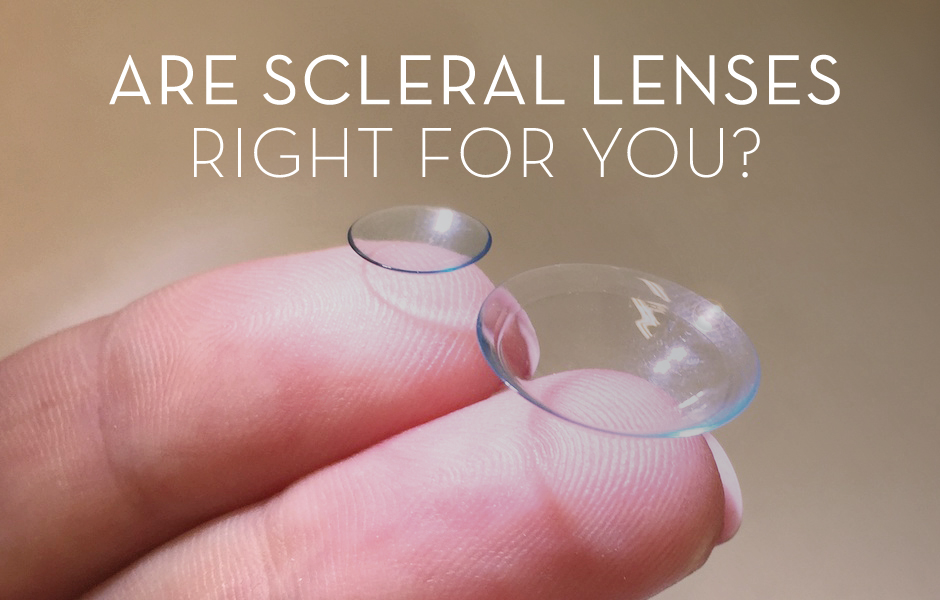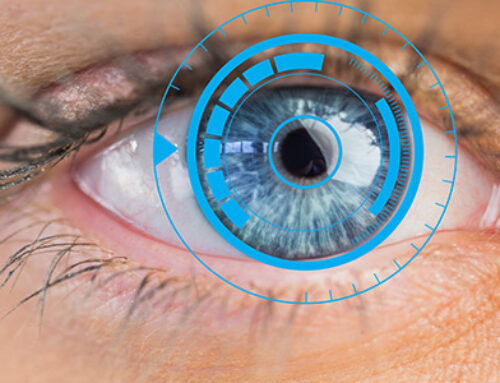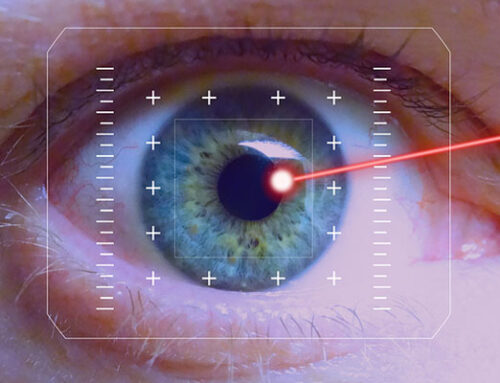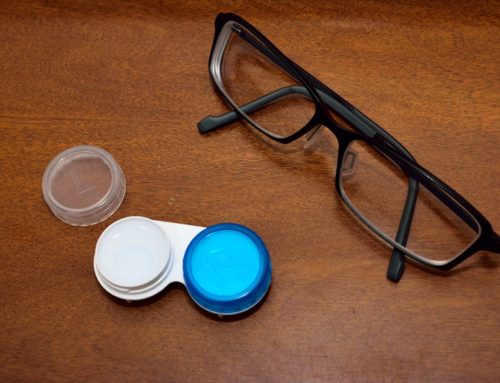Scleral Contact Lenses: Are They Right for You?
Have you been told that you can’t wear contact lenses because an irregular shape of your cornea? An irregular cornea could prohibit you from wearing traditional contact lenses.
If you’ve been told that you can’t wear contact lenses, then you might get a second opinion and ask about scleral lenses. In some situations, these modern lenses can be the perfect solution to help with vision correction.
What are Scleral Contact Lenses?
These contact lenses are gas permeable, large-diameter lenses. They are designed to cover the full corneal surface so that the lens rests on the white part of the eye. This area of the eye is known as the sclera, which is why the lenses are called scleral contacts.
Most standard gas permeable lenses have a smaller diameter compared to soft lenses. But, the scleral design requires that these gas permeable lenses to be about the same size of a soft lens. They can range in size between 14.5 mm and 24 mm. If the lens is smaller than 18 mm, then it is known as a mini-scleral lens. Even the smaller sized lenses are big enough to cover the entire surface of the cornea.
Why Scleral Lenses?
Since they cover such a large area of the eye, scleral lenses can help by creating a smooth surface which helps to overcome problems related to an irregular corneal shape. So, these vision correction lenses are often used when a patient has corneal irregularities, such as keratoconus.
Another reason scleral lenses can be beneficial is for people who suffer from severe dry eyes. The area between the back surface of the scleral lens and the cornea can act as a reservoir for fluid, keeping the eyes moist. Some people are unable to wear contact lenses because of dry eyes. But, scleral lenses can be an option to try since these lenses retain the moisture around the eye.
Caring for Your Contact Lenses
Because scleral lenses are different than other types of contact lenses, special care needs to be taken when you are cleaning and handling the lenses. Before placing the lens in the eye, it is best to fill the lens with a solution. This saline solution will stay in contact with the cornea through the course of the day, keeping your eye moist and comfortable.
As with other types of contact lenses, it is important to clean the lenses regularly to avoid eye infections. Scleral lenses are prescribed for daily wear, so you will need to remove them and clean the lenses each night.
Choosing the Right Vision Correction Lenses for You
How do you select the right vision correction lenses for your situation? The best thing that you can do is talk to an experienced Chicago optometrist to learn more about the options that are available. An eye exam can determine your visual needs. Then, recommendations can be made to optimize your vision and comfort.
Here at Village Eyecare, we are working hard to provide the best primary eye care in Chicago and the surrounding areas. We invite you to schedule an appointment at one of our four locations!








